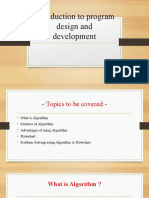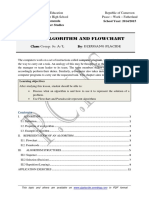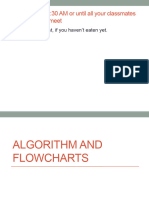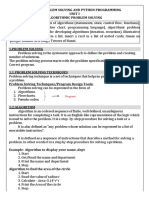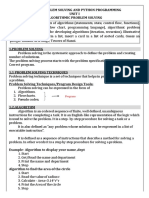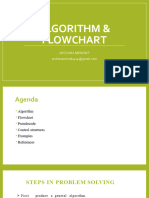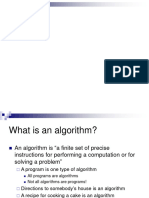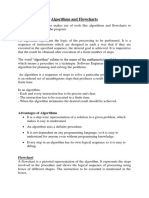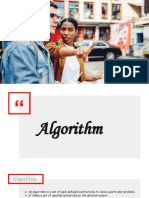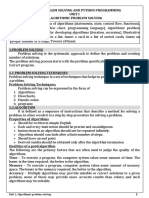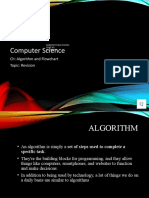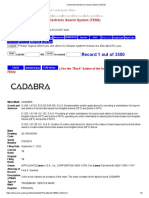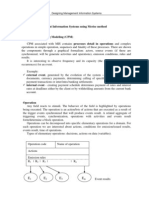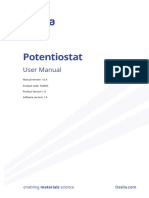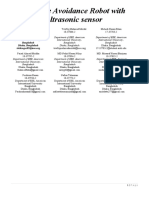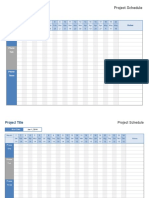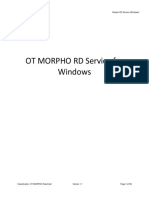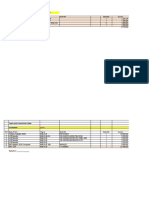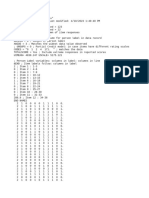0% found this document useful (0 votes)
7 views2 pagesAlgorithms and Flowcharts
The document explains algorithms as finite sequences of instructions that convert input into output, emphasizing the need for computer language for execution. It outlines the characteristics of a good algorithm, such as input, generality, and definiteness, and introduces flowcharts as a visual representation of algorithms. Additionally, it discusses the advantages and disadvantages of flowcharting in terms of presentation, coding, debugging, and complexity.
Uploaded by
riddhitoshniwal22Copyright
© © All Rights Reserved
We take content rights seriously. If you suspect this is your content, claim it here.
Available Formats
Download as DOCX, PDF, TXT or read online on Scribd
0% found this document useful (0 votes)
7 views2 pagesAlgorithms and Flowcharts
The document explains algorithms as finite sequences of instructions that convert input into output, emphasizing the need for computer language for execution. It outlines the characteristics of a good algorithm, such as input, generality, and definiteness, and introduces flowcharts as a visual representation of algorithms. Additionally, it discusses the advantages and disadvantages of flowcharting in terms of presentation, coding, debugging, and complexity.
Uploaded by
riddhitoshniwal22Copyright
© © All Rights Reserved
We take content rights seriously. If you suspect this is your content, claim it here.
Available Formats
Download as DOCX, PDF, TXT or read online on Scribd
/ 2

